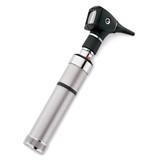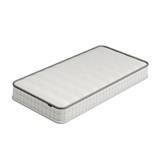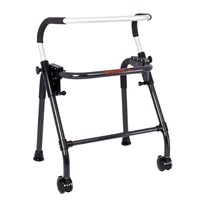Research has shown the benefits of using neuromuscular rolling to relieve and prevent pain, but with so many studies, it’s hard to keep everything straight. To make things even more complicated, there’s been an ongoing debate on the true effectiveness foam rollers and roller massagers provide for self-myofascial release on joint range of motion, muscle recovery and performance. A group of researchers scoured the available research to organize everyones’ thoughts and answer three questions:
- Does self-myofascial release with a foam roll or roller-massager improve joint range-of-motion (ROM) without affecting the muscles’ performance?
- After an intense bout of exercise, does self-myofascial release with a foam roller or roller-massager enhance post exercise recovery and reduce delayed onset of muscle soreness (DOMS)?
- Does self-myofascial release with a foam roll or roller-massager prior to activity affect muscle performance
Effectiveness of foam rollers and roller massagers
The researchers focused on four key areas during their review:
- Hip range of motion
- Knee range of motion
- Ankle range of motion
- Sit and reach
Their results highlighted the effectiveness of both foam rolling and roller massage. Benefits of the products include
Foam roller
- Increased hip extension range of motion (Bushell et al. 2015)
- When combined with static stretching, produced statistically significant increases in hip flexion range of motion (Mohr et al. 2014)
- Foam rolling in the mediolateral axis had a greater effect on increasing sit and reach scores than rolling in the anteroposterior axis (Peacock el al. 2015)
- Significantly increased knee range of motion (MacDonald et al. 2013)
- Range of motion increased 9.1% by foam rolling with static pressure (Skarabot et al. 2015)
Roller Massager
- Increased sit and reach scores by 4.3% (Grieve et al. 2014)
- Increased knee range of motion and neuromuscular efficiency (Bradbury-Squires et al. 2015)
After the tests, the researchers answered the three questions they created for the purpose of the review. They concluded:
- Both foam rolling and roller massage offer short-term benefits for increasing flexibility of the hip, knee and ankle without affecting muscle performance.
- Foam rolling and roller massage after high intensity workouts does indeed diminish DOMS in lower extremity muscle performance. It also reduces perceived pain in subjects during post-exercise intervention periods.
- Foam rolling or roller massage neither positively or negatively affects muscle performance during short sessions (Cheatham S et al. 2015).
There you have it. If you’ve ever doubted the effectiveness of self-myofascial release through foam rolling or roller massage, you can rest assured that it IS effective and DOES work.
Source: Cheatham S et al. 2015. The Effects of Self-Myofascial Release using a Foam Roll or Roller Massager on Joint Range of Motion, Muscle Recovery, and Performance: A Systematic Review Int J Sports Phys Ther 10(6):827-38



















